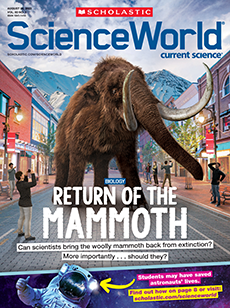This past spring, the Borneo Orangutan Survival Foundation mounted a special rescue mission. The foundation’s conservationists saved a young orangutan being kept in a cramped cage in a village on the Southeast Asian island of Borneo. Orangutans are endangered, so the group aims to protect as many as they can. But this one was even more special than usual. That’s because instead of having an orangutan’s typical reddish fur, she was completely white. The ape’s rescuers named her Alba, Latin for “white.” She’s the only known albino orangutan in the world.
Albinism is an inherited condition in which the body can’t properly produce colored chemical compounds called pigments. As a result, the skin, hair, fur, feathers, or scales of albino animals are mostly colorless. Without their typical coloration, these animals don’t usually fare well in the wild.
This past spring, the Borneo Orangutan Survival Foundation carried out a special rescue mission. The foundation’s conservationists saved a young orangutan. She was being kept in a small cage in a village on the Southeast Asian island of Borneo. Orangutans are endangered, so the group wants to protect as many as it can. But this one was even more special than usual. She didn’t have reddish fur like orangutans normally do. She was completely white. The ape’s rescuers named her Alba, Latin for “white.” She’s the only known albino orangutan in the world.
Albinism is a condition passed down through the parents. Normally, the body makes colored chemical compounds called pigments. But animals with albinism can’t properly produce these compounds. So their skin, hair, fur, feathers, or scales are mostly colorless. These animals don’t usually do well in the wild without their normal coloration.

